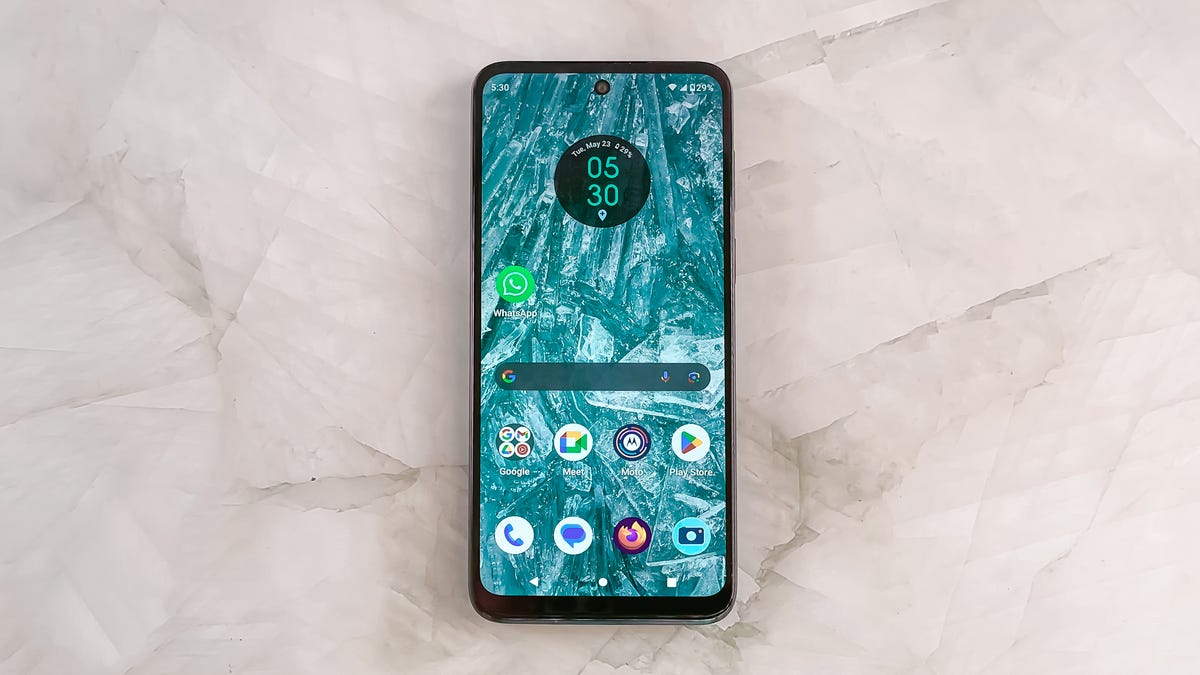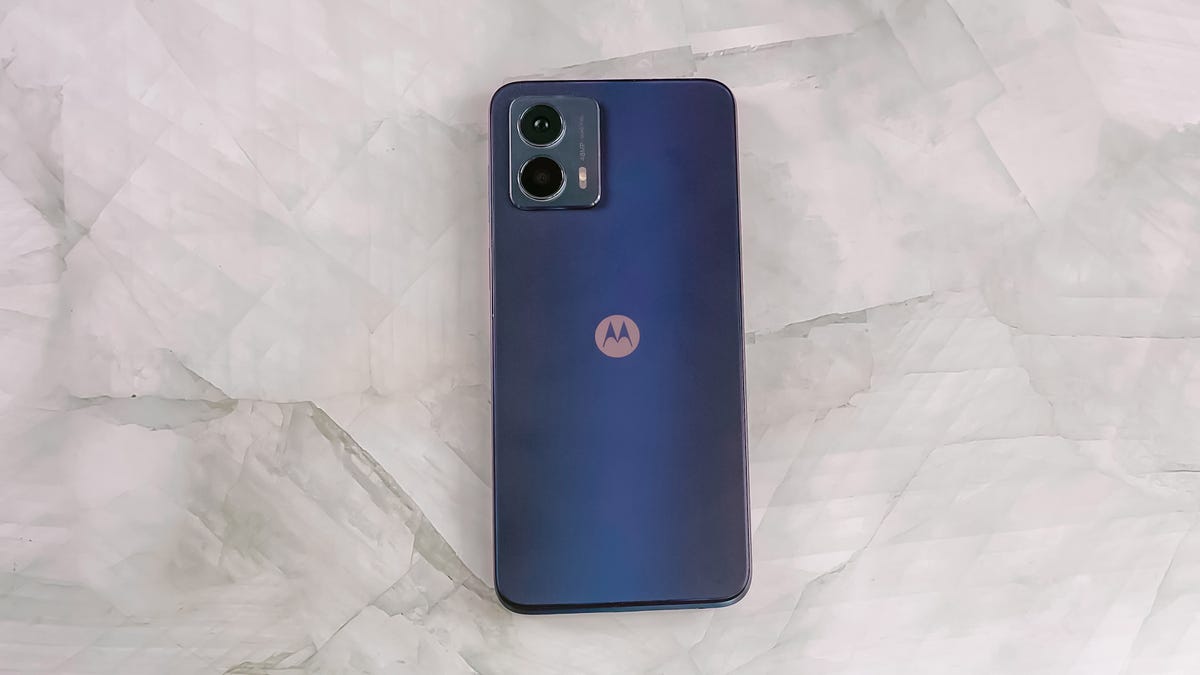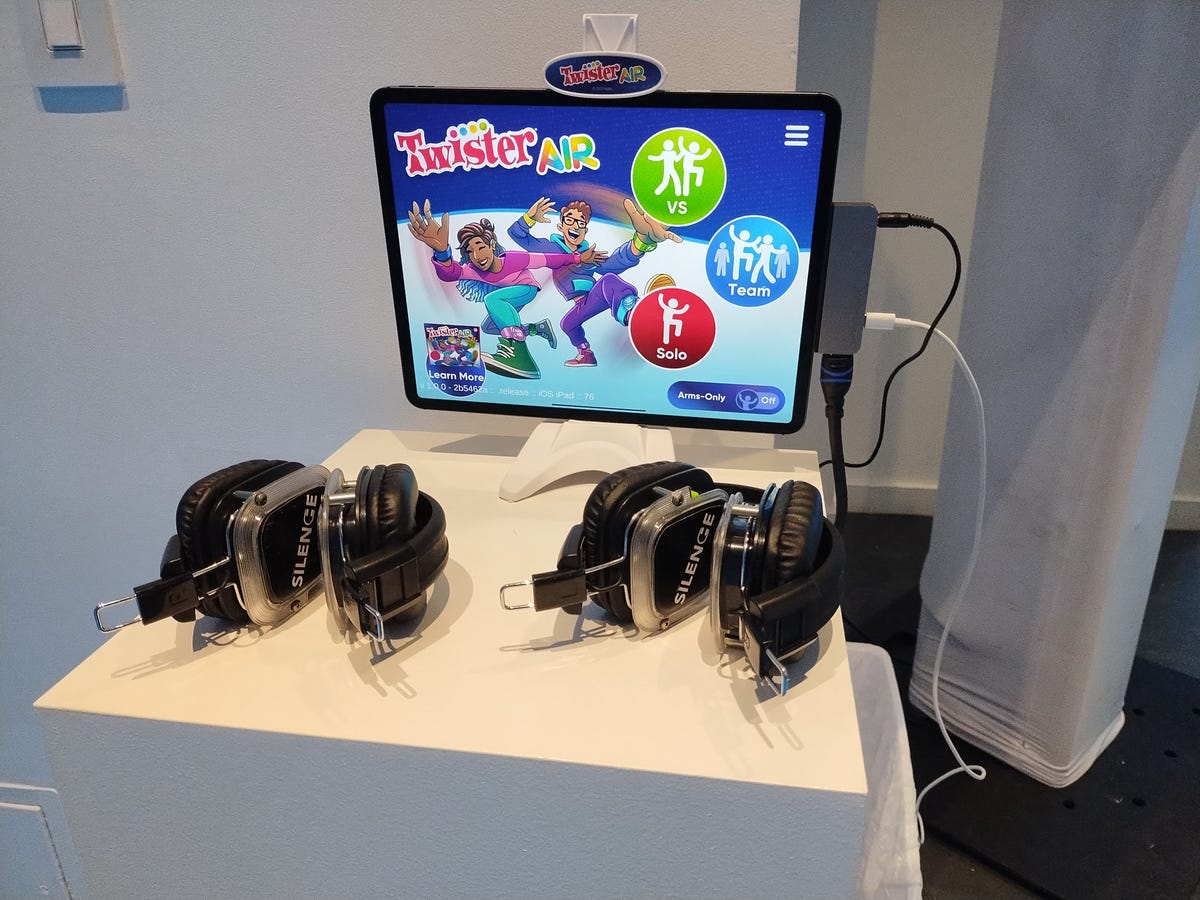Moto G 5G (2023) Hands-On: Are the Trade-Offs Worth the Lower $250 Price?
The Moto G gets reinvented with a cheaper price, and it shows.
The $250 Moto G 5G marks a big reimagining of the phone since last year's more-expensive $400 model . This year's Moto G 5G scales back on storage and cameras to help hit its lower price but steps up the refresh rate on its 6.5-inch display to a smooth 120Hz. All that, while keeping the 5,000mAh battery and its roughly two-day battery life, should make the phone a decent value for its price.
The Moto G 5G has 4GB of memory, runs on a Snapdragon 480 Plus 5G chip and comes with 128GB of storage. This is a decent amount of storage space for this price and can be expanded up to 1TB with a microSD card. The phone's stereo speakers and headphone jack are also quite nice for when I watch videos or listen to music. It ships with Android 13, and like other Moto G phones, will get only one major software update to Android 14 along with three years of security updates
I spent a few days with the Moto G 5G so far, and, while it looks and feels like it's fallen down a few rungs of the price tier, the phone might meet enough essential needs to satisfy most people. However, by no means does it punch above its weight. The Moto G 5G has 4GB of memory, runs on a Snapdragon 480 Plus 5G chip and comes with 128GB of storage. This is a decent amount of storage space for the price and can be expanded up to 1TB with a microSD card. The phone's stereo speakers and headphone jack are also quite nice for when I watch videos or listen to music. It ships with Android 13, and like other Moto G phones, will get only one major software update to Android 14 along with three years of security updates.
The Moto G 5G has a main 48-megapixel camera and a 2-megapixel macro camera.
However, when testing other features, I can't help but compare this phone to the slightly more expensive $300 Moto G Power 5G ;-- which includes quite a bit more for that extra $50. For instance, the Moto G 5G's 6.5-inch display runs at a 720p resolution. Even though that screen animates smoothly with its 120Hz refresh rate, I find that the lower-resolution makes photos and videos look rather plain. The Power 5G runs at a 1,080p resolution at the same refresh rate, and in my review of that phone the display was a particular highlight.
Performance also seems to take a noticeable hit during my early tests, which could be attributable to the phone having 4GB of memory compared with the 6GB available on the Power 5G. Often when I test phones, during casual use I play games while taking calls or texting. I find that when a call comes through while I'm playing a game, in this instance Marvel Snap, that the game needs to reload itself after I answer the call. Lighter multitasking, however, has been fine, for instance reading news articles while I'm listening to music has not led to any noticeable issues.
The Moto G 5G also moves down from three cameras on last year's model to two, with this year's phone including a 48-megapixel main camera and a 2-megapixel macro camera. This is an area that cheaper phones often struggle, and my early photos taken by the Moto G 5G don't change that opinion. Like other cheaper phones, photos taken in outdoor environments or indoor locations with good lighting come out OK, but without much detail.
Outdoor photo taken on the Moto G 5G of the Public Theater.
Indoor photo taken on the Moto G 5G at a Twister Air demo event.
The 8-megapixel front-facing camera is similarly serviceable, but photos look a little plain.
I'll reserve judgment after I have taken the Moto G 5G through more photo scenes, but my early indoor photos are comparable to the Moto G Power 5G -- which is to say that they are fairly blurry and lack detail. Photos are usable but more for quick group chats and social posts.
The Moto G 5G's 5,000mAh battery, however, easily lasted two days during my early tests, matching the performance that I saw on the Moto G Power 5G and the; $200 Moto G Stylus . As we continue to test phones in the $300 price range, it has been comforting to see the 5,000mAh battery become a standard feature in 2023. However, I hope Motorola finds a way to speed up charging, as the Moto G 5G's 15-watt max speed takes about 90 minutes to charge from 4% to 88%. It's not awful, but is slow when compared with the 33-watt charging included on comparable phones like the OnePlus N300 and OnePlus N20.
Motorola has been releasing several phones over the last few weeks, with the Moto G 5G arriving alongside the $800 Motorola Edge Plus. The Moto G 5G appears to be offering a middle ground between the 4G-only Moto G Stylus and the Moto G Power. The main question as I continue testing is whether this phone's trade-offs are worth the lower price, or if someone searching for a deal should consider paying slightly less for the Stylus or more for the Power.




